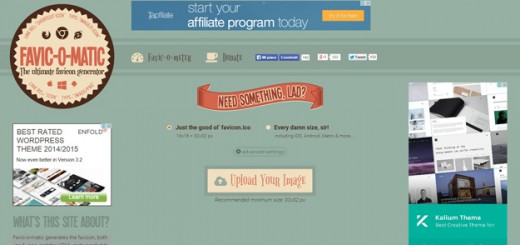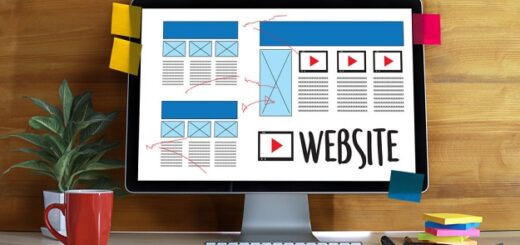Within the first seconds of entering your website, can users tell what your business does and where to find the information they’re looking for? Does your page layout, site speed and navigation elements encourage them to keep reading and engage?
All of these factors are heavily influenced by the website design decisions you make. Web design is so much more than picking out a colour palette and making sure things look good. It’s about creating a holistic experience that takes users on a rewarding journey.
In fact, good web design can improve user engagement, drive up sales and solidify your brand’s reputation.
If you’re looking for ways to improve your website, here are 7 design tips that every web design agency worth their salt uses.

1. Improve Site Speed
If your website takes longer than 3 seconds to load, you could be losing potential customers and sales opportunities.
Faster sites are better at keeping users engaged for longer, have higher conversion rates and rank better on search engine results pages (SERPs).
Improve your site speed by:
# Compressing your images
# Reducing the number of plugins and widgets
# Using a CDN (content delivery network)
# Choosing a reliable website host
# Condensing HTML, JavaScript and CSS
# Reducing the number of redirects
# Using asynchronous loading for CSS and JavaScript files
2. Ensure Your Site is Optimised for Mobile
Since people use their mobile devices for browsing the internet, conducting transitions, looking up business information and discovering local services, it’s essential for every website to be mobile friendly.
Not only will optimising your site for mobile improve user experience and drive up engagement, it’s also a ranking factor for Google.
Optimise your website for mobile by:
# Using a responsive template or web design
# Simplifying the layout of your web pages
# Creating clear call to actions
# Placing links far apart to avoid accidental clicks
# Reducing the number of fields in a form
3. Make Navigation Easy and Intuitive
How easy is it for someone to find their way around your site and access the information they are looking for?
Websites that have clear and intuitive navigation keep users engaged for longer and are better at leading them down the sales funnel. Plus, when users can find what they’re looking for quickly, they have a better experience which reflects well on your brand.
Use these tips to improve navigation on your website:
# Plan out your website structure and page hierarchies
# Put user experience first – think about what information users want to find
# Keep navigation elements consistent on every web page
# Make sure your link text is relevant
# Include a search feature and make sure it works
# Link to relevant product pages in your blog posts
# Include responsive menus for mobile
4. Use and Optimise Images
Visual content is the best way to grab attention and communicate your message in a clear and engaging way.
When it comes to using images on your website, the best choice is images that are high quality, professional and original. Choose images that are in line with your brand identity and values.
Images are one of the biggest culprits for slow site speeds, so make sure you optimise your images for faster load times without compromising on visual quality.
Here are some tips for optimising your images:
# Resize your images for web
# Choose the right image format for the purpose (JPEG, GIF and PNG are common)
# Describe your image in plain language in the image alt attributes
# Use keywords in your image file names
# Clean up your media library to reduce number of files
# Try image optimisation plugins
5. Create a Readable Layout
Websites that have clean, readable layouts are better to look at, but they also improve engagement. It’s important to think about what colours you use and how much white space you have on your web pages as well as how you format your text content.
Here are the best tips for making your web layout more readable:
# Break large chunks of text into small paragraphs
# Use headings and subheadings to make skim reading more easy
# Use a basic, easy-to-read font
# Space your page elements out to avoid overcrowding
# Use dot points, lists and tables where possible
6. Keep Things Consistent Across Your Website
To give your website users a cohesive brand experience, it’s important that your design is consistent across all pages of your website. Being consistent with layouts, fonts and CTAs helps users feel safe and familiar and it reinforces your brand messaging.
Use these tips to keep your web design consistent:
# Keep menus, search boxes and logos in the same position on every page
# Use the same fonts and colours throughout
# Have a clear visual hierarchy to guide users’ eyes
# Keep your CTA buttons the same style and size throughout
# Make sure padding and white space is the same on each page
7. Catch your 404s
404 pages appear when someone clicks on a link to a page that doesn’t exist. While you might not get heavily penalised by search engines for 404s, it can have a negative impact on user experience.
Users who run into a 404 page are more likely to leave your website and look for information elsewhere.
There are many tools out there which can help you find your 404 errors and fix them. You can also use other tools to help you set up 404 pages which are more useful to your website users. Include helpful links and CTAs to get them back on track.
The Bottom Line
Web design is so much more than making your website look attractive. In fact, web design best practices can have a big impact on user experience, engagement, conversions and search engine visibility.
Like most website efforts, web design should be an ongoing process. Make sure you monitor and analyse your web design strategies so that you can keep on improving in the future. If you are still not sure where to start your web design journey, you can check some of the best web design agencies here.




